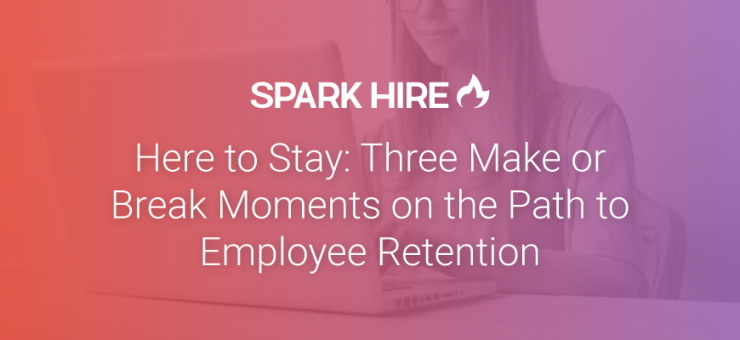The Great Resignation feels like an acute problem; an unexpected and urgent crisis that could have only come to pass due to the unique pressures brought on by the COVID-19 pandemic. But the problem of workplace dissatisfaction, and the imperative importance of employee fulfillment, is something people and culture (P&C) professionals have not only seen coming but have proactively worked toward long before the watershed moment of March 2020.
Following their lead, three crucial junctures within the employee journey are clear make or break moments for turnover and retention. Onboarding, cross-boarding, and re-skilling are the legs of the employee experience stool. The road to lasting solutions is long, and should be a two-way street; there are perhaps no better authorities on employee experience than employees themselves. But in the short-term, as the great resignation wanes on and employers grapple to fill their applicant pipelines while keeping their existing teams, directing time, energy, and resources to these three employee moments will prove to be necessary.
All Aboard: Re-engineering Onboarding
Gartner coined the term ‘total experience’ (TX) to explain the strategy of creating people-centric shared experiences throughout all touchpoints of an organization, from consumers to employees. While technology was the backbone, the most promising elements of a TX design were the potential to personalize a consumer or employee’s experience and to bring stakeholders into closer connection in tailored and organic ways.
Extending those principles, TX can be a guiding principle in the need to re-engineer the way companies onboard their new hires. P&C professionals have long known the importance of this initial phase, the first time a new hire comes into contact with the company’s culture and internal brand. Employees who consider their onboarding ‘highly effective’ have an eighteen-fold increase in their commitment to the company. Since the pandemic, the power of personalization in achieving that efficacy has become all the more clear.
Diversity and inclusion is a key focus in the workplace, but supporting hires from different perspectives, backgrounds, and skillsets means getting onboarding right. The extent to which the employee is able to collaborate in their onboarding experience often determines its impact. Some candidates need social hours, one on ones, and relaxed ways to connect with their coworkers. Others need hands-on learning from higher-level executives within the organization. Rather than guessing and committing to a one-size-fits-all approach, employers can let the candidate guide the onboard experience; surveys, early meetings, and mentorship programs can help them know where to begin. The result will be team members who have been empowered since they walked in the doors, and who understand the company as a place in which they’re meant to show up as individuals with needs, preferences, weaknesses, and strengths.
Post-Crisis Cross-Training
As Gartner’s TX outlook predicts, silos continue to be broken down across all parts of the corporate experience. This has unique implications for employees. Roles are blurring and changing, responsibilities are being shared, and hierarchies and titles are less relevant than the larger goals that a team is meant to achieve. To support those changes, which are positive signs of smoother operations down the road, employers need to invest in cross-boarding—the internal ‘onboarding’ experience offered when a team member starts taking on a new role.
Cross-boarding protocols support employees in the fulfilling endeavor to expand their capacity and tackle new roles within the organization. The resources spent in this area tell team members that they’re encouraged to explore new worlds in their existing roles and that the company is in full support of their learning and their experimentation. Cross-boarding is best executed with a combination of outside resources—seminars, training certificates, and online courses—and internal mentorship from employees in similar roles or with applicable experience.
Continuous Learning: A Third Compensation
Even beyond formal cross-boarding, the need for employees to continue to expand and learn within the workforce is imperative both on the part of the company and on the part of the employee themselves. High-level talent has an evergreen need to ‘re-skill’—to be challenged, to try new things, to fail, and then learn from the failure. Continuous learning resources are an important form of employee compensation, third in the trifecta of salary and benefits. These offerings send an important message to employees that their growth and fulfillment are valuable to the company beyond the ways in which it directly relates to their day-to-day tasks.
P&C professionals have worked long and hard for this watershed moment; they’ve known that employees are the engine of the workforce at large. Fulfillment, satisfaction, and total employee experience are heavily determined during the onboarding, cross-boarding, and re-skilling stages. When employers focus on those three crucial areas and venture the necessary resources, they’ll be paid back in spades by a committed, engaged, and empowered team with whom to tackle the challenges of the recovery and beyond.
About the Author
Tara Milburn is the CEO of Ethical Swag, a sustainable branding company that helps business leaders and HR teams meet their ESG goals. A certified B-Corporation, Ethical Swag has been audited to the highest standards of sustainability and helps business owners achieve their ESG goals from the culture they establish to the products they use.












